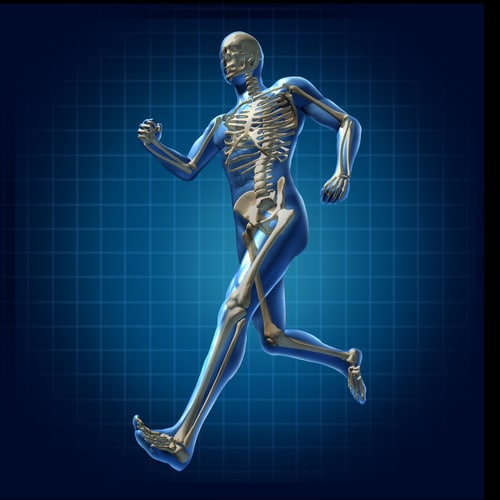
We All Recognize That High Blood Pressure and Cholesterol Can Be Fatal, But What About Reduced Bone Mineral Density?
Bones are made up of calcium and phosphate, which constitute their mineral content. Bones deficient in calcium are referred to as having low bone mineral density, which can lead to a condition known as osteoporosis. Osteoporosis develops gradually over time and is influenced by your peak bone mass during youth. Consequently, most osteoporotic issues begin during the teenage years instead of in your 70s when they usually become noticeable. Effective strategies for preventing osteoporosis exist but should ideally be adopted before the age of 20, at a stage when many do not appreciate the significance of their skeletal health.
The skeleton itself functions as an organ system, and skeletal metabolism (the physiological process through which bones are constructed and broken down) has become increasingly vital in medical care. As people experience longer and healthier lifespans, they encounter more ailments related to the skeleton, such as osteoporosis. In your senior years, it’s your skeleton that enables you to engage in life’s most significant experiences. These experiences can be taken away from you due to bone disease. As an orthopedic spine surgeon, I frequently encounter otherwise healthy patients in their 70s and 80s who suffer fractures due to osteoporosis, which diminish their activity levels and overall health. Most are unaware of what could have been done to prevent, screen, or treat osteoporosis. This article will delve into the importance of skeletal health and why it’s essential to think about it now.
What is the issue
Similar to organ failure (for instance, heart failure), bone failure arises from unchecked osteoporosis that deteriorates the skeleton into a fragile and compromised structure. For example, fractures occurring from minor trauma such as bumps, slips, and even coughing are known as insufficiency fractures because the bones weaken and cannot withstand minor forces. The older you get, the higher the risk of experiencing an insufficiency fracture. Insufficiency fractures of the hip and spine carry a mortality rate of up to 40 percent within the first year. Reportedly, only 50 percent of patients with a hip fracture will maintain their independence in the year following the fracture. Even if one survives, insufficiency fractures can be painful and disfiguring. Remarkably, only 28 percent of individuals receive medical treatment for osteoporosis after a hip or vertebral fracture, and treatment rates have dropped by 20 percent over the last decade.
Most young adults likely perceive the skeleton as static. The skeleton acts as a passive structure for most of our lives, and we tend to take it for granted. We fail to realize that the skeleton is more than just a coat hanger for our bodies; it is a dynamic living organ system that changes every day and can appear significantly different as you grow older. I have come to view bone mineral density as akin to a retirement account. In such an account, you deposit money during your youth and withdraw it during your old age. Likewise, you invest in bone density when you are young and rely on that strength as it diminishes with time. Preventing osteoporosis requires decades of preparation. This deposit and withdrawal process of bone density, which I define as skeletal metabolism, begins at an age when we are not focused on our skeletons.
As an orthopedic surgeon, I was very eager to understand this process, yet when I looked for a clear resource on the subject, I found none. It seemed I was not alone in this, as many primary care physicians and internists tend to be hesitant about treating osteoporosis, likely due to a lack of confidence in the topic. Anecdotally, nearly all of the patients I see who have experienced insufficiency fractures have not had the underlying issue, osteoporosis, addressed. Many patients and doctors simply do not recognize or trust in the treatment of osteoporosis. I was compelled to delve deeper into skeletal metabolism and ultimately authored an entire handbook on the matter.
What constitutes skeletal metabolism
Skeletal metabolism involves the remodeling, repair, and degradation of bones. It is heavily guided by parathyroid hormone, vitamin D, and calcium. It’s a complex process that occurs daily within the body and can evolve over time. It is influenced by factors such as diet, exercise, sleep, and exposure to various chemicals and medications. Minor behavioral changes can significantly impact your skeletal structure when accumulated over decades. Aside from the understanding that one should consume calcium through dairy products, I personally felt unequipped with knowledge regarding skeletal metabolism during my teenage years. I was unaware of what to avoid or what actions would strengthen my bones.
Why young adults should take an interest in skeletal metabolism
There are several reasons for young adults to be interested in skeletal metabolism. Everyone will confront osteoporosis as they get older. The most significant increases in bone mineral density are observed up to age 16 in females and up to age 18 in males. Indeed, most bone mass accumulation can be achieved by the end of